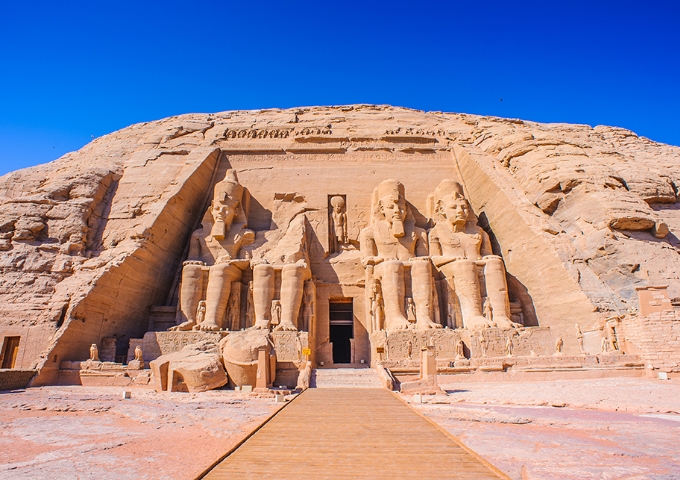Temples are the heartbeat of Egyptian Culture and Civilisation. Come, visit and experience these testimonials to the might, power and architectural capabilities of the Pharaohs, architecutre and design marvels that have withstood the test of time and elements.
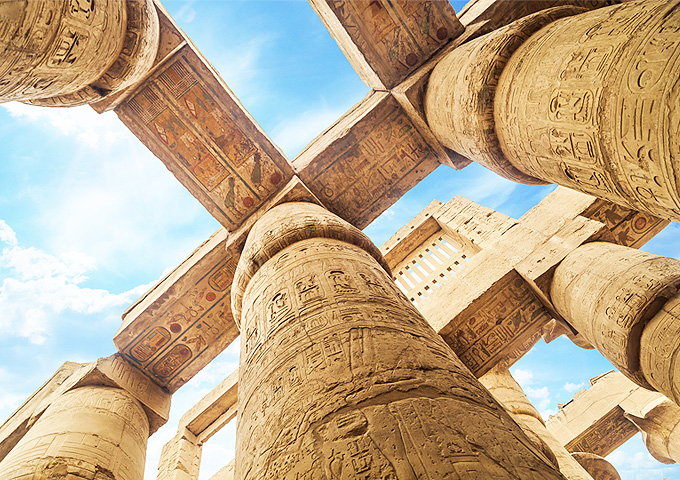
The Karnak Temple dates back from around 2055 BC to around 100 AD. It is a city of temples built over 2,000 years, and dedicated to the Theban triad of Amun, Mut, and Khonsu. Being the largest building for religious purposes ever to be constructed, the Karnak Temple was known as the “most select of places” by ancient Egyptians. Karnak is believed to have been an ancient observatory as well as a place of worship where the god Amun would interact directly with the people of earth. At the heart of Karnak, the Nineteenth Dynasty Pharaoh Seti I erected his Great Hypostyle Hall, a colossal forest of 134 giant sandstone columns supporting a high clerestory roof and enclosed by massive walls that after 3300 years, remain substantially intact today
Known as "The Harem of the South", The Luxor Temple was connected to The Karnak Temple by a 3km (2-mile) long processional Avenue of Sphinxes (4th century BC), part of which is still visible, while the rest of which is currently undergoing excavation. Eventually, it will be renovated in its entirety all the way to the Karnak. Unlike the other temples in Thebes, the Luxor Temple is not dedicated to a cult god or a deified version of the pharoah in death. Instead, the Luxor Temple is dedicated to the rejuvenation of kingship; it may have been where many of the pharoahs of Egypt were crowned in reality or conceptually
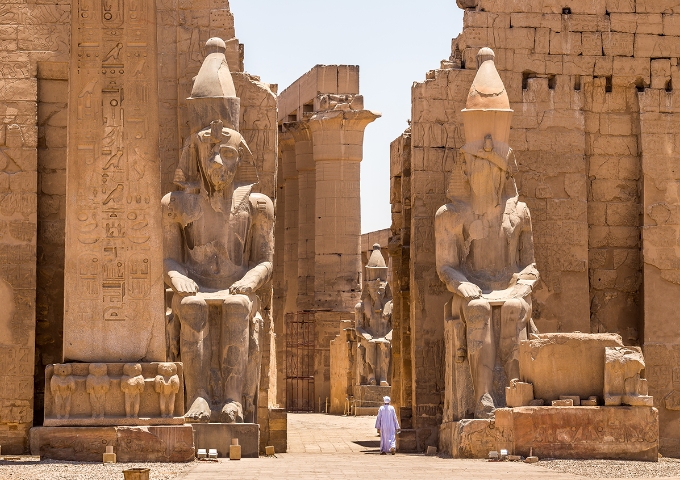
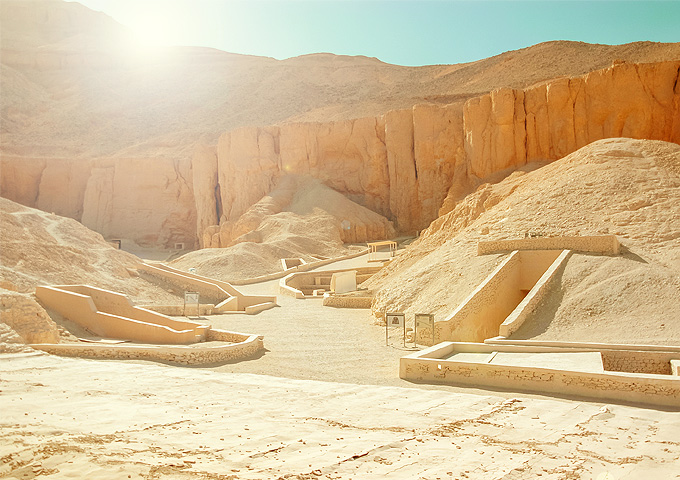
The Valley of The Kings, located near Luxor on the Nile's West Bank, hosts the most famed collection of elaborate tombs of the New Kingdom Pharoahs, rulers who decided to build their final resting place closer to their dynastic roots. Royal burial grounds for the most famous of Pharoahs, including Tutankhamen and Rameses II, tomb here. As they have been constructed between 1539 and 1075 BC, they are testament to a life, a time and a culture of one of the world's earliest civilizations. This place yet remains an explorer's paradise, with many, many tombs and secrets awaiting to be explored and shared with the world.
If you thought stones couldn't sing, think again. Welcome to the Colossi of Memnon, a tribute to an era of architectural marvels on the banks of the Nile Valley. Did you know, on certain mornings, one of the statues would emit a high pitched sound. This "singing" was attributed to Eos, Memnon's mother, mourning for her son. These massive, colossal statues depict King Amenhotep III, in a seated position, along with his wife Tiye and mother Mutemwiya. These statues stand guard over the entrance to the hoary Amhentop memorial temple, which in its day was the largest and most opulent. Other temples, prior or later, do not match up to the magnificence, the opulence of this temple.
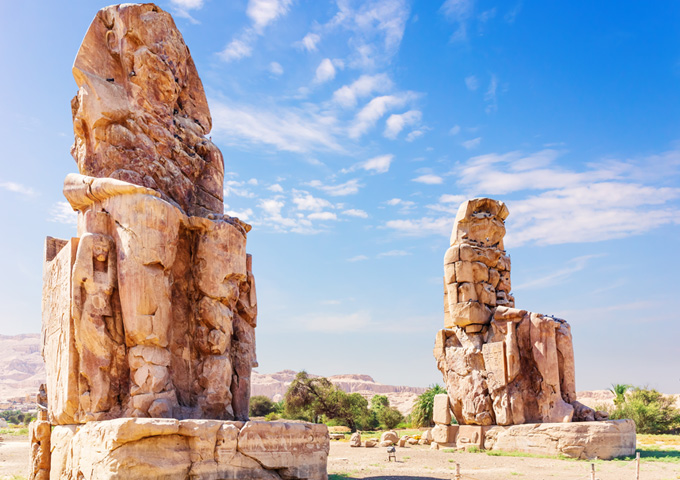
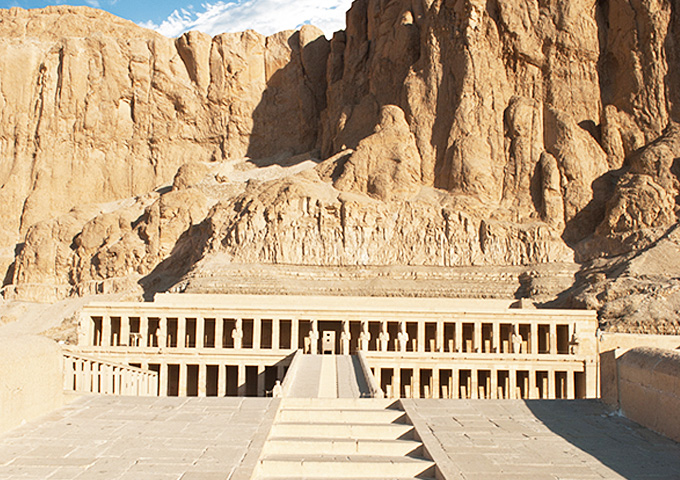
The Nile wasn't about kings. It was about Queens too. And what better testament to this, than Queen Hatshepsuts temple. A masterpiece of ancient architecture, the temple has three massive terraces that rise above the desert floor, into the cliffs. The whole structure points towards the monumental Eighth Pylon, Hatshepsut's most recognizable addition to the Temple of Karnak and the site from which the procession of the Beautiful Festival of the Valley departs. The temple's twin functions are identified by its axes: on its main east-west axis, it served to receive the barque of Amun-Re at the climax of the festival, while on its north-south axis it represented the life cycle of the pharaoh from coronation to rebirth.
The Edfu temple is built on a land believed to have witnessed the greatest battle in the history of Ancient Egyptian mythology, between the powers of good and evil, Gods Horus and Set. There is no story in Egypt, that is complete without some reference to this mythology, and the learnings of and from it. One of the best preserved shrines in Egypt, this temple was built in the Ptolemaic Kingdom between 237 and 57 BC. The inscriptions on its walls provide important information on language, myth and religion during the Hellenistic period in Egypt.
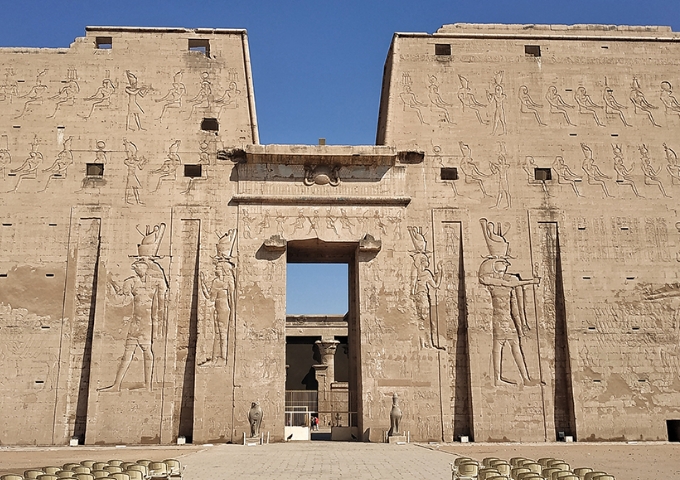
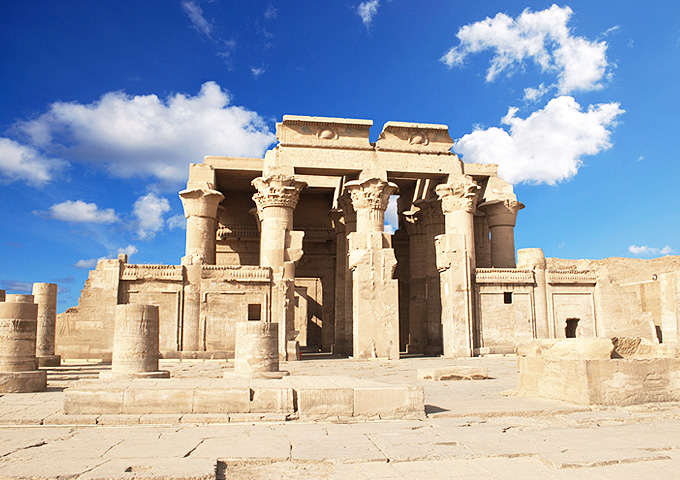
Welcome to one of the most powerful cities of Egypt, a city that controlled commerce by sitting at the heart of all commercial caravan, making their way across the Nile Valley, into ancient Nubia. The military heart of all empires beats here, the most important spot in Egypt for+I71 generation after generation of Pharoahs, The Kom Obmo Temple. Located near Aswan is the unique double design temple, dedicated to two sets of gods of ancient Egypt. Sobek - the crocodile god, and god of fertility and creator of the world, finds place in the south hall and is a testament to the ancient Egyptian's reverence for nature, and the denizens of the Nile. On the other hand, the northern hall is dedicated to the falcon god Horus, a testament to the free winds that ruled the Niles desert and waters. And while you're here, don't miss the Crocodile Mummy museum.
Aswan's Northern Quarry is home to the famous Unfinished Obelisk – a 41-meter-long and four-meter-wide chunk of stone that was probably abandoned because of a crack in the rock.
It's estimated that if completed, the obelisk would have weighed 1,168 tons and would have been the largest ever hewn.
On the surrounding rock faces, you can also see the many traces of the work of ancient stonecutters. The blocks here would have been detached from the rock by boring holes along a prescribed line, driving wedges into them, and then soaking the wedges with water to detach the block.
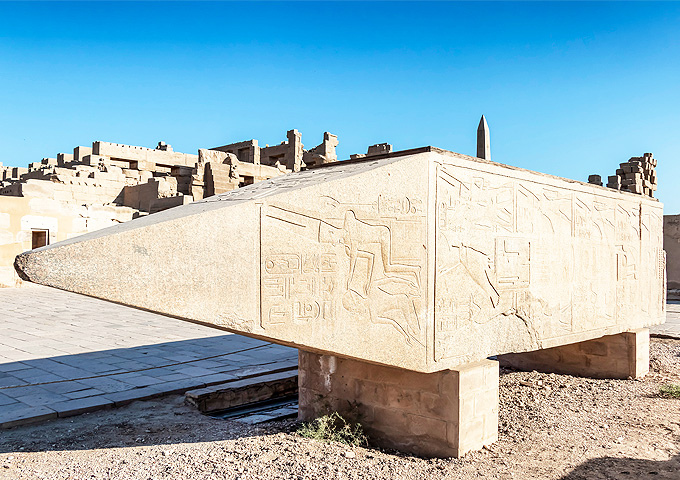
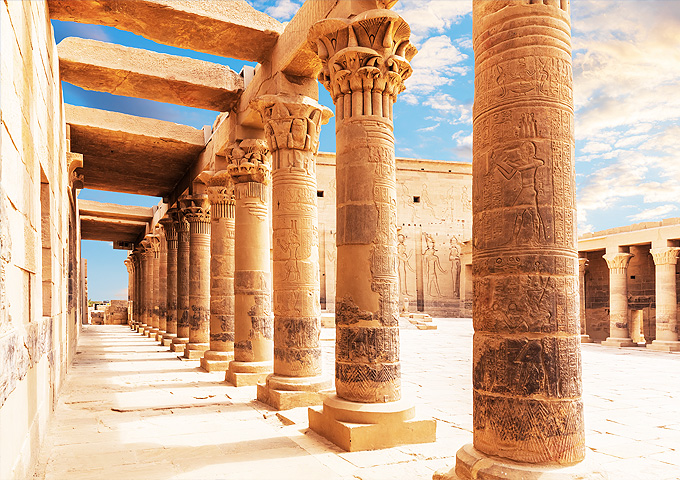
The Philae Temple - also called the Sacred Temple of Isis - is one of Upper Egypt's most beguiling monuments both for the exquisite artistry of its reliefs and for the gorgeous symmetry of its architecture, which made it a favorite subject of Victorian painters.
It was moved from its original home on Philae Island to nearby (higher) Agilika Island where it sits today.
The Temple of Isis, a center for the ancient cult of Isis, is the main part of the Philae complex, but the island is also home to the Temple of Hathor, the Kiosk of Trajan, and various other buildings from the Roman and Byzantine periods.
The most magnificent of the monuments Ramses II built, Abu Simbel is both the perfect example of the ambition of this pharaoh's reign and a model illustration of the achievements of modern engineering and global cooperation. A story of a slice of history, saved from the Aswan Dam flooding by moving it. The colossal stone statues that grace the facade are Pharaoh Ramses II's attempt to achieve immortality. It has worked. Today, visitors here still crane their necks in disbelief at the behemoth temples, just as the pharaoh's subjects would have done when the temples were first raised.
